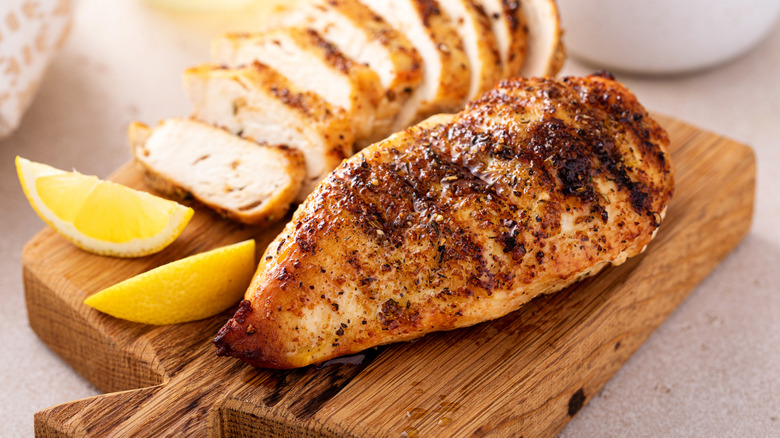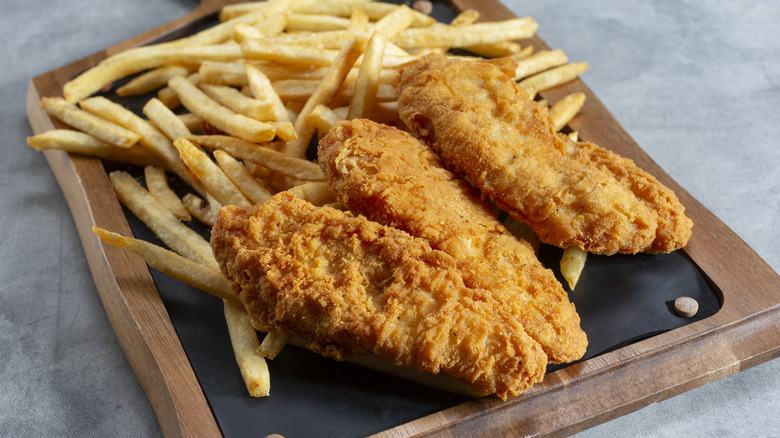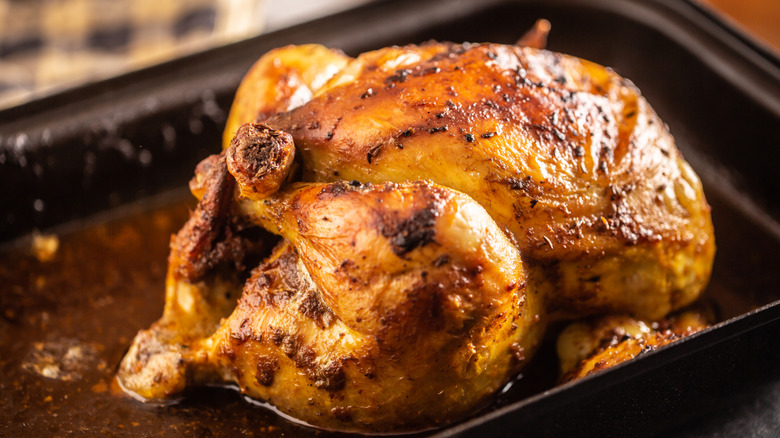The Subtle Difference Between Chicken Breast And Tenderloins
Chicken breasts and tenderloins are everyday favorites that are commonly found in many fridges. Both are lean, white cuts of meat with a similar texture and flavor profile, so it's no surprise that most people would use them interchangeably. But what you probably don't know is that there are some subtle, yet important, differences between these cuts of meat, and understanding them will take how you cook your chicken to the next level.
Chicken breasts are one of the largest poultry cuts, taken from the pectoral muscle on the underside of the chicken, whereas tenderloins are thinner muscles that are loosely attached to the breast. The tenderloin is typically removed from the breast and sold separately. The most obvious difference between these cuts is their shape and size. Meat from the breast is larger and more plump, while tenderloins are thinner and more delicate. Additionally, tenderloins contain a higher sodium and fat content than chicken breasts do. But should these differences affect which cut of meat you decide to use? Using the right cut will enhance the taste and flavor of your dish, ensuring a delicious final result every time.
Cooking methods that work best for each cut
Because chicken breasts are larger and thicker than tenderloins, they take much longer to cook and can be prone to drying out. The hardiness of the breast meat makes them versatile and ideal for recipes that require you to roast, bake, steam, or poach your chicken. Using a nice cut of breast meat, have a go at making roasted chicken with fennel, or try your hand at Singapore's beloved national dish: Hainanese chicken rice.
Tenderloins, on the other hand, are significantly more, well, tender. Because of this, they cook at a faster rate, but due to the increased levels of fat and sodium, they retain their juiciness and flavor. This durability (and faster cooking time) makes them shine in dishes that require quick, superheated frying or grilling.
If you want to make your chicken tenderloin even more tender, you can use a fork to remove the tendon from the tender to ensure they always come out succulently soft. A consistent fried favorite is breaded chicken tenders. No matter what you coat the chicken in, you will undoubtedly end up with a simply delicious, homemade favorite for the whole family.
Differences of price and availability
Another difference between breasts and tenderloins is their price. There are only two small tenderloins per bird, so they tend to cost a bit more. Additionally, you will need more than two for most recipes. If you're buying tenders at the grocery store, more often than not you will find several packaged together. If you're on a tighter budget or are an avid at-home chef looking to take their skills to the next level, you could always try learning how to cut a whole chicken yourself.
When it comes down to it, purchasing a whole chicken is far more affordable, and with a little technique, you can get a lot of meat out of it. More than that, a chicken carcass is perfect for making a delicious chicken stock. Of course, if you're a bit more squeamish (or are simply after convenience), you can easily find an entire bird pre-packed in most grocery stores. Better yet, ask your local butcher to separate the tenderloins from the breasts for you.



